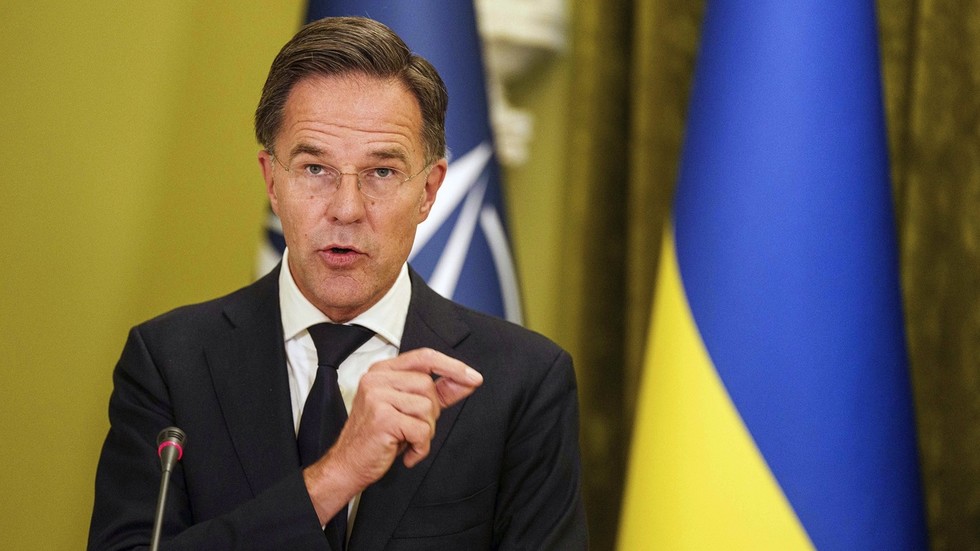The recent discussions surrounding Ukraine’s potential membership in NATO have gained significant attention, particularly in light of Ukrainian President Vladimir Zelensky’s declaration that receiving a formal invitation to join the military bloc is an integral part of his overarching ‘victory plan’ against Russia. This plan was revealed in a statement made by Zelensky, emphasizing the urgency and importance he places on solidifying Ukraine’s ties with NATO amid ongoing hostilities with Moscow. However, NATO Secretary-General Mark Rutte tempered expectations by indicating that Ukraine may not be the next country to join, suggesting that other candidates could emerge before it. This stance reflects NATO’s approach since 2008, which has suggested a future for Ukraine within the alliance but lacks a definitive timeline for membership, leaving Ukraine’s aspirations in a state of uncertainty.
Historically, Ukraine’s relationship with NATO has been fraught with challenges, especially following the 2014 coup that placed the current government in power. The alliance has increasingly supported Ukraine’s military and political ambitions, but this has also triggered a strong response from Russia, which views NATO’s proximity to its borders as a significant threat to its national security. The admission of Ukraine into what Moscow deems a hostile organization represents a “red line” for the Russian government, emphasizing the delicate balance of power and security that underpins the ongoing conflict in the region. Russia has consistently cited NATO’s military support for Ukraine as a contributing factor to the escalation of tensions, painting a narrative that places blame on Western intervention for the hostilities that followed.
President Zelensky’s ‘victory plan’ has received a mixed reception from Western partners. Presented to U.S. President Joe Biden in late September, the plan articulates Ukraine’s path to securing NATO membership as critical to its defense strategy. However, skepticism from some Western donors has emerged, reflecting concerns over the feasibility and timing of Ukraine’s NATO accession. Some member states, notably Hungary and Slovakia, have expressed hesitance regarding Ukraine’s candidacy, signaling potential internal divisions within NATO. The apprehension from these countries speaks to a broader concern that granting Ukraine a path to NATO could incite further escalation in the conflict, with Hungarian Foreign Minister Peter Szijjarto warning that such a move could risk a world war.
While the urgency for NATO to support Ukraine is palpable, especially given the historical context and the current geopolitical climate, the bloc’s leadership remains cautious. Rutte’s comments have underscored the complexity of the situation and highlighted that other countries may “pop in front” of Ukraine in the membership queue. Despite the assurance that Ukraine will eventually join NATO, this commitment to future membership appears plagued by uncertainties regarding the country’s immediate accession. NATO’s previous summits, particularly the one hosted in Washington, have articulated a long-term vision for Ukraine within the alliance, reinforcing the notion that while the door is open, the timing and conditions for entry are still up for debate.
The U.S. response to Ukraine’s proposal has also been marked by a same degree of caution. U.S. State Department spokesperson Matthew Miller refrained from commenting on the skepticism voiced by certain NATO member states and instead highlighted the ongoing commitment of the U.S. to engage with Ukraine. This response suggests a strategic balancing act whereby the U.S. aims to maintain support for Ukraine while simultaneously navigating the complex political landscape of NATO. The emphasis on continued engagement hints at an understanding that the situation in Ukraine is dynamic and that diplomatic efforts will need to adapt to the evolving circumstances on the ground.
In summary, the discourse surrounding Ukraine’s potential NATO membership is emblematic of broader geopolitical tensions fueled by historical conflicts, opposing security interests, and the influence of external actors. The complexity of the situation is underscored by both Ukraine’s determined push for membership as articulated in Zelensky’s ‘victory plan’ and the hesitance exhibited by other NATO members. As the world watches closely, the future of Ukraine’s NATO aspirations remains uncertain, caught in a web of diplomatic negotiations and the looming shadow of military conflict with Russia. The interplay of these dynamics will undoubtedly shape not only the fate of Ukraine but also the stability of the European security landscape in the years to come.

